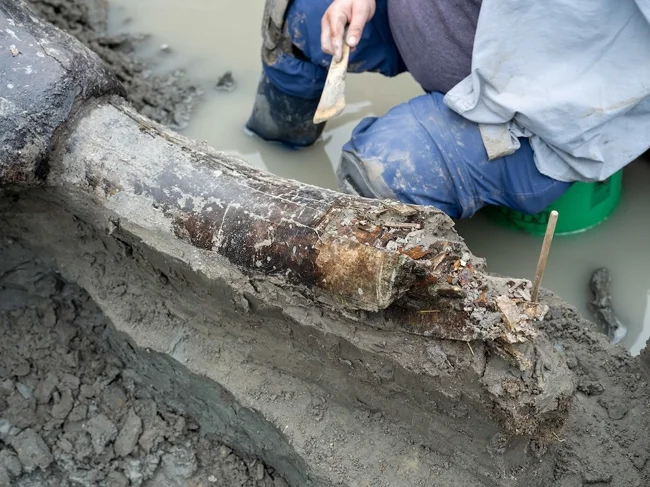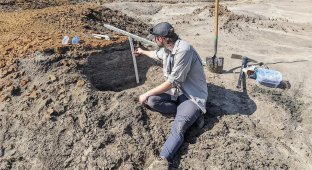A 13,600-year-old mastodon skull was found in Iowa (7 photos + 1 video)
Mastodons, the ancestors of modern elephants, roamed the earth for millions of years but died out at the end of the Pleistocene, about 10,500 years ago. The skull of the creature, recently found in a riverbed in Iowa, USA, provides new information about the animal and the environment of the time. 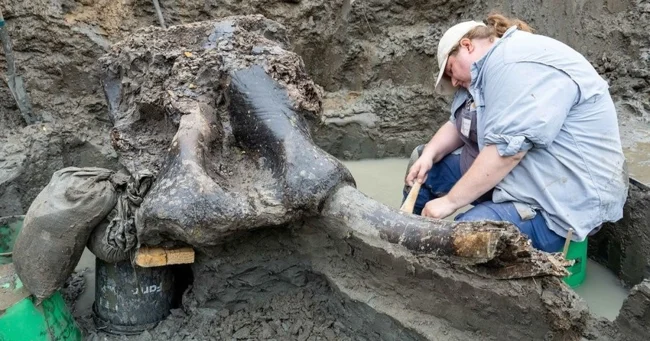
The remains of the species known scientifically as Mammut americanum were discovered thanks to a Wayne County, Iowa man who posted a photo of himself holding a large bone. It turned out to be a mastodon femur.
Archaeologists arrived at the site and dug up a tusk that appeared to be part of a skull. Further excavations proved that this assumption was correct. 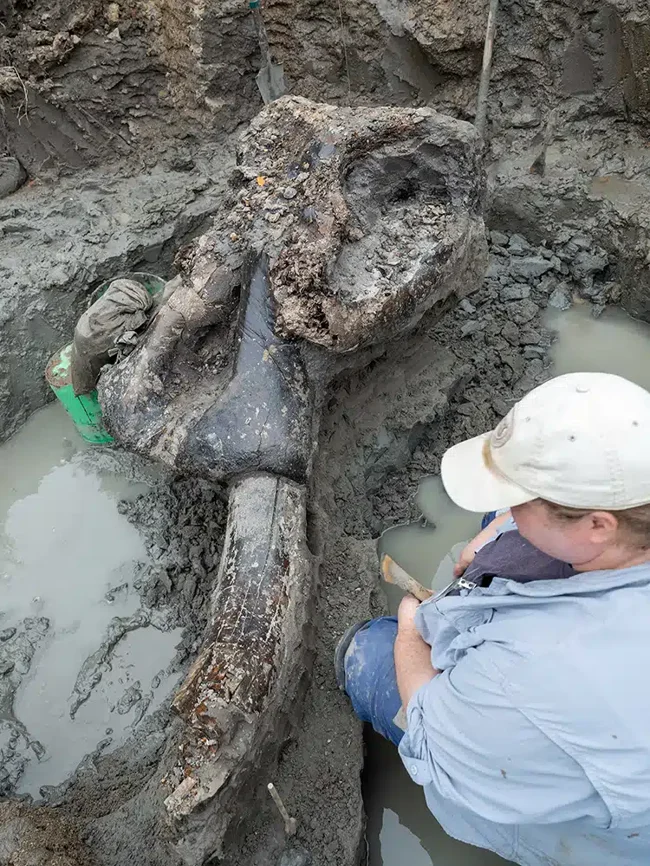
"There are methods to determine how many babies a female mastodon has. They are based on changes in the chemical composition of her body during pregnancy and birth. These changes leave a "chemical signature", including in the tusks, which can be deciphered," explained archaeologist John Doershoek. 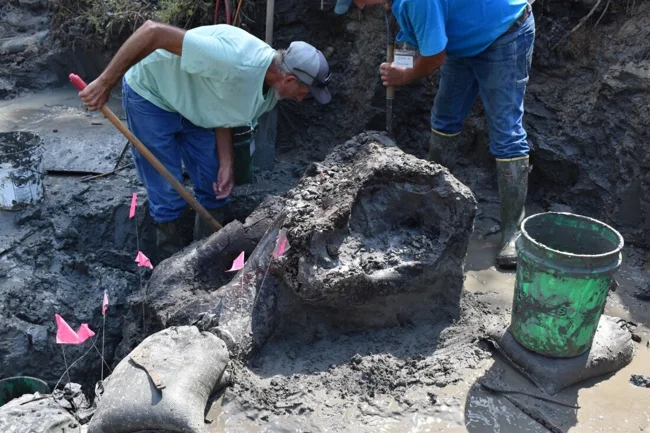
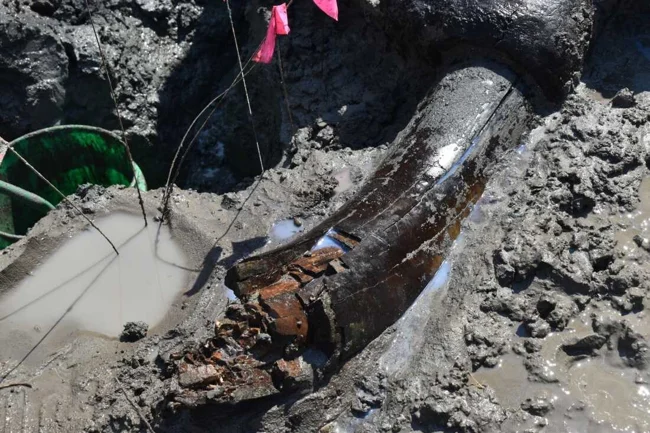
Stone tools were also found at the mouth of the river. If the skull had been in the ground for 13,600 years, then the tools appeared a couple of millennia later. At the time this mastodon roamed Iowa, the earliest humans were arriving in the state.
"We are very hopeful that we will find evidence of human interaction with this creature. We may find arrowheads and knives that were used to hunt and butcher the animal. There may be potential evidence on the bones themselves - cut marks." 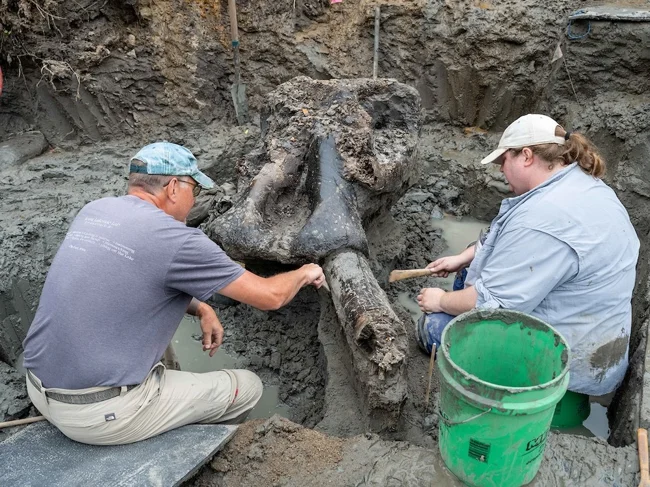
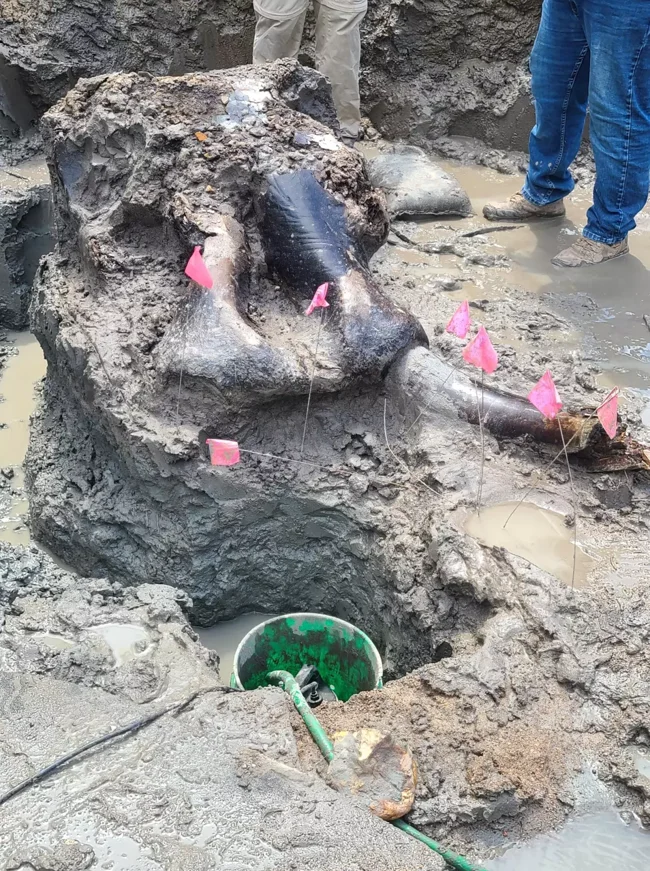
While human activity and climate change have caused the extinction of mastodons, this specimen may tell a unique story about the end of the Ice Age and the arrival of humans in the American Midwest. 